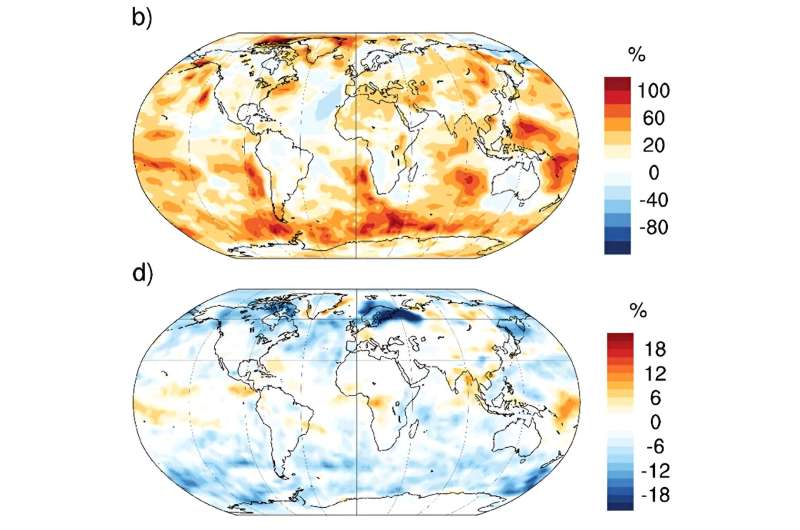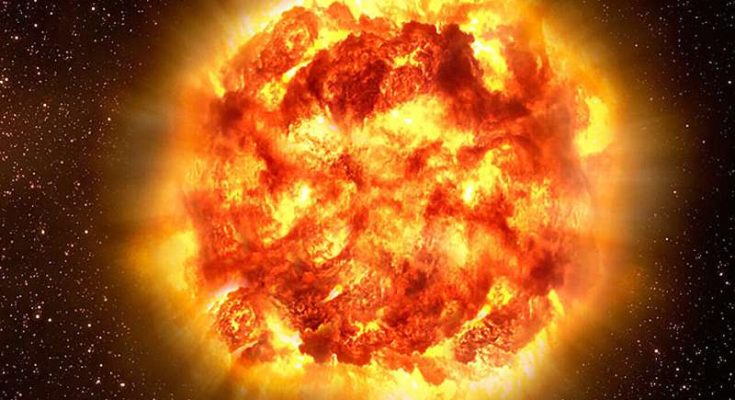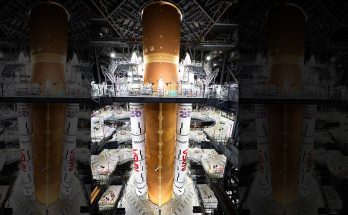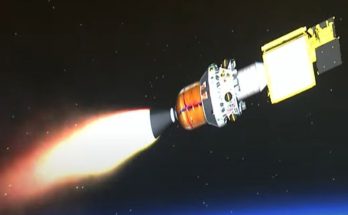Earth’s protective atmosphere has sheltered life for billions of years, creating a haven where evolution produced complex lifeforms like us. The ozone layer plays a critical role in shielding the biosphere from deadly UV radiation. It blocks 99% of the sun’s powerful UV output. Earth’s magnetosphere also shelters us.
But the sun is relatively tame. How effective are the ozone and the magnetosphere at protecting us from powerful supernova explosions?
Every million years—a small fraction of Earth’s 4.5 billion-year lifetime—a massive star explodes within 100 parsecs (326 light-years) of Earth. We know this because our solar system sits inside a massive bubble in space called the Local Bubble.
It’s a cavernous region of space where hydrogen density is much lower than outside the bubble. A series of supernovae explosions in the previous 10 to 20 million years carved out the bubble.
Supernovae are dangerous, and the closer a planet is to one, the more deadly its effects. Scientists have speculated on the effects that supernova explosions have had on Earth, wondering if they have triggered mass extinctions or at least partial extinctions.
A supernova’s gamma-ray burst and cosmic rays can deplete Earth’s ozone and allow ionizing UV radiation to reach the planet’s surface. The effects can also create more aerosol particles in the atmosphere, increasing cloud coverage and causing global cooling.
A new research article published in Communications Earth & Environment examines supernova explosions and their effect on Earth. It is titled “Earth’s atmosphere protects the biosphere from nearby supernovae.” The lead author is Theodoros Christoudias from the Climate and Atmosphere Research Center, Cyprus Institute, Nicosia, Cyprus.
But that’s for modern Earth. During the pre-Cambrian, before life exploded in a multiplication of forms, the atmosphere had only about 2% oxygen. How would an SN affect that? “We simulated a 2% oxygen atmosphere since this would likely represent conditions where the emerging biosphere on land would still be particularly sensitive to ozone depletion,” the authors write.
“Ozone loss is about 10%–25% at mid-latitudes and an order of magnitude lower in the tropics,” the authors write. At minimum ozone levels at the poles, ionizing radiation from an SN could actually end up increasing the ozone column. “We conclude that these changes of atmospheric ozone are unlikely to have had a major impact on the emerging biosphere on land during the Cambrian,” they conclude.
What about global cooling?
Global cooling would increase, but not to a dangerous extent. Over the Pacific and Southern oceans, CCN could increase by up to 100%, which sounds like a lot. “These changes, while climatically relevant, are comparable to the contrast between the pristine pre-industrial atmosphere and the polluted present-day atmosphere.” They’re saying that it would cool the atmosphere by about the same amount as we’re heating it now.

The researchers point out that their study concerns the entire biosphere, not individuals. “Our study does not consider the direct health risks to humans and animals resulting from exposure to elevated ionizing radiation,” they write.
Depending on individual circumstances, individuals could be exposed to dangerous levels of radiation over time. But overall, the biosphere would hum along despite a 100-fold increase in UV radiation. Our atmosphere and magnetosphere can handle it.
“Overall, we find that nearby SNe are unlikely to have caused mass extinctions on Earth,” the authors write. “We conclude that our planet’s atmosphere and geomagnetic field effectively shield the biosphere from the effects of nearby SNe, which has allowed life to evolve on land over the last hundreds of million years.”
This study shows that Earth’s biosphere will not suffer greatly as long as supernova explosions keep their distance.
Provided by Universe Today





